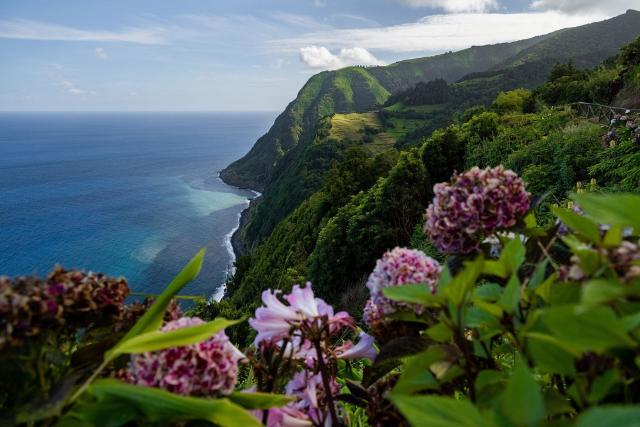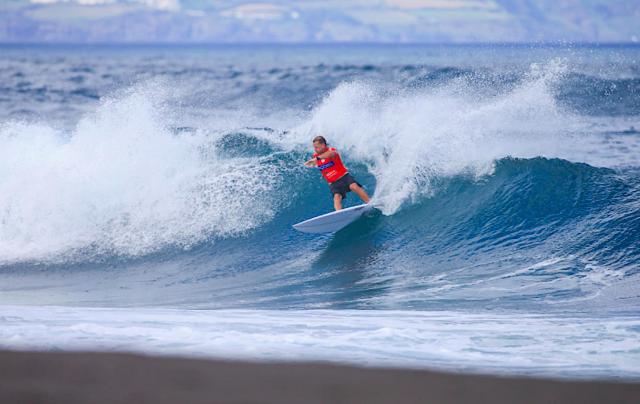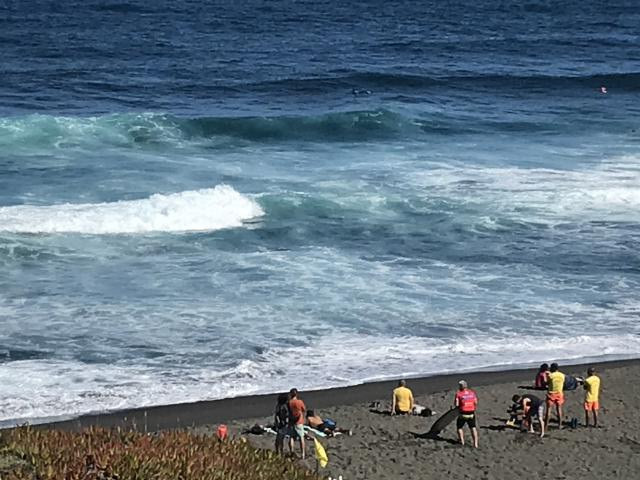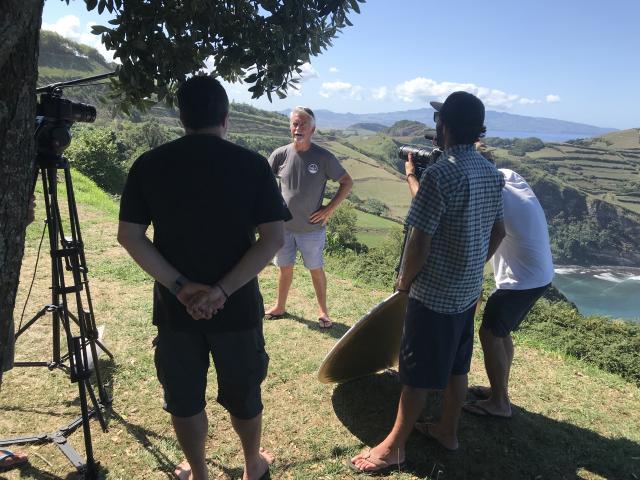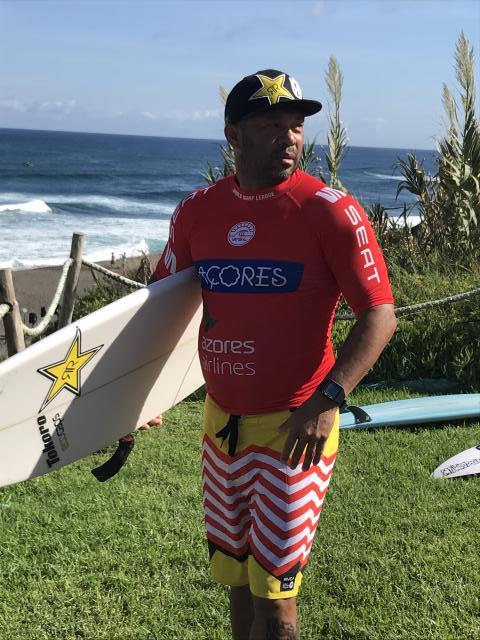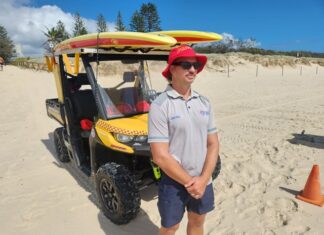In the European autumn of 2018, we’d just arrived back in France after a wonderful month surfing and hanging out in Spain and Portugal when I had an email from Joao Valente, a surfing entrepreneur from Lisbon, asking if I could head back to his town to catch a flight to the Azores Islands.
That wasn’t really the plan, so I ripped up the plan and made a new one, which was to fly to Lisbon and connect with the Azores Airlines flight to this remote archipelago in the North Atlantic, roughly halfway between Lisbon and Boston. Joao and I had been talking over dinner in Figuera de Foz a few weeks earlier about the upcoming World Masters surf contest in the Azores and he’d asked if I would come over and report on the event and do some filming with Portuguese television about the need to protect the island chain’s endangered surf breaks.
To be honest, despite nearly half a century of surfing all over Europe, the only thing I knew about the Azores at that point was a dirty limerick I learned in school, so I thought the TV crew could probably live without my subtitled ignorance, not to mention the fact that getting there wasn’t exactly cheap, so I declined the offer. But now the Portuguese tourism people were footing the bills for two tickets from San Sebastian return, plus all our land costs, which is why as we climbed out of San Seb in a cool grey dawn, I pulled my briefcase down from the overhead and started giving myself a crash course in the surf breaks and environmental politics of the Azores.
The nine islands of the Azores have long been linked with the Greek mythology of the lost city of Atlantis, and you get a sense of that on descent into Ponta Delgado, the only city on the island of Sao Miguel. To either side of the town, you can see giant waves crashing onto the base of high volcanic cliffs, with shrouds of low cloud hanging at jaunty angles. As we banked for landing I caught a glimpse of a beautiful green-topped coastline of rocky coves, and who knew how many surf spots.
Surfing apparently came to the Azores in the early 1950s courtesy of a couple of hotdogging soldiers at the US military base on neighbouring Terceira Island, but apparently the grunts never made it across the water to Sao Miguel, which proved slower to catch on to its potential but since the 1970s has become the hub of surfing on the archipelago.
The north coast surf breaks stretching from Ribeira Grande on Sao Miguel began hosting small Portuguese and European surfing events from the 1990s, but the place stayed pretty much under the radar and the local surf culture was steeped in hippie consciousness from another era. But in the new century things began to change. In 2012 Portuguese big wave surfer Joao de Macedo launched a mission to find and chart outer reef breaks off the coast, with enough success to later inspire the American big wave team of brothers Rusty and Greg Long to find even more potential.
Meanwhile, The World Surf League and Portuguese surf entrepreneurs put an international event on the qualifying tour schedule, and in 2018 the fired up old champs of yesteryear that make up the Masters Championships rocked into town. The surf at Ribeira Grande didn’t exactly co-operate, but there were enough good days to get the vision and the images of an almost unknown mid-ocean paradise went around the world.
Unfortunately, while this was happening businessmen and foreign investors were eying off the archipelago for purposes other than surfing. Rabo de Peixe on Sao Miguel was one of the most consistent waves in the Azores and which was lost to the development of a fishing harbour. The community on Terceira is currently fighting a coastal development project on the south coast of the island that will change a celebrated wave forever.
So into the fray steps Joao de Macedo, who as well as riding large waves is now the Azores co-ordinator of the Save The Waves Coalition, the Santa Cruz-based entity that manages the stewardship programs of World Surfing Reserves, including Noosa. Joao is helping roll-out
their newest program, Surf Protected Area Networks (SPANs), which identifies, prioritizes and protects surf ecosystems around the world. And the Azores has been given high priority.
Says Joao: “The Azores is at a critical moment and on the cutting edge of the creation and management of a broad network of Marine Protected Areas. Surfing is in this amazing position to contribute and help the process to protect the Azores’ coastal and marine resources through surf conservation – an approach that will benefit and sustain all local Azorean coastal communities.
“Despite the hopes for surf conservation in the Azores, we have also witnessed what happens when surf ecosystems are not prioritized and the value of surfing is not known by decision-makers. These threats and losses highlight the importance of engaging the surf community in local decision-making processes.”
Here, here, brother Joao.
And on that note I wish you all a wonderful, wave-filled holiday season.

